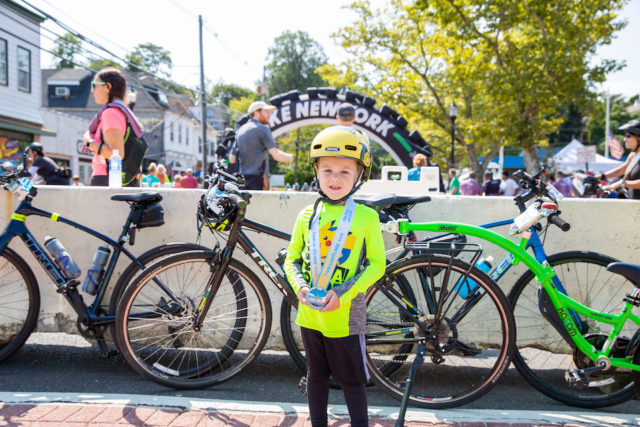October 3, 2022
Notes from the Info Desk: Keeping Kids Safe While Biking on NYC Streets
What happens when kids age out of biking on New York City sidewalks? Our Info Desk received a note asking us to share our best tips for teaching kids (12+) how to ride on NYC streets safely. After all, 12 year-olds may have aged out of biking on sidewalks, but they are still kids, and NYC streets are, well… NYC streets.
According to NYC Biking Laws, kids 12 and under may ride on NYC sidewalks, but after they turn 13, they should ride on the street. Kids 14 and under must wear a bike helmet, but we recommend all cyclists wear one. If you’re unsure how to find the best helmet for your child, the New York City Department of Transportation (NYC DOT) has a cool bike helmet tips video you can watch for extra reassurance!
Street Riding 101
Now, there are a couple of important things to consider for kids riding on NYC streets:
Be Prepared:
Make sure your kid’s bike is ready to go every time they go for a ride. Use the “ABC Quick Check” developed by the League of American Bicyclists to prevent issues on the road.
- Air – Your tires should feel rock-hard. Use a pump with a gauge to inflate your tires to the right pressure, and inspect tires for large cuts; bald spots; or dry, cracked sidewalls.
- Brakes – Spin both wheels forward, and check that the rims do not rub on the brake pads. Check that the brake pads make full contact with the rim. Brake pads should not touch the tire or touch the spokes.
- Chain, Cassettes, and Cranks – On single-speed bikes, the chain should be tight, not sagging. Ensure your chain is lubricated and your crank and chainring bolts are tight.
- Quick Release – Quick-release levers should be in the “closed” position, pointing up or backward. It is tight enough if you cannot rotate it while it is closed.
- Check – Twist the stem, handlebar, brake and shift levers, and seat to ensure they are tightly secured. Shake the wheels and cranks sideways to check for loose parts, and take a short “roll” on the bike to double-check the brakes and gears are working correctly.
Be Visible:

- Remember, kids are smaller than adults, so ensure they are visible. We recommend using hi-viz helmets and shirts that stand out in traffic.
- Fit your kid’s bike with front and back lights, reflectors, and wheel lights. Remember – the more those around you see your kid, the safer they’ll be on the streets. Browse Recycle-A-Bicycle’s selection of lights.
Be Predictable:
- Signaling your next move lets everyone around you (drivers, pedestrians, and other riders) know what you’re doing in advance and gives them time to provide you with room to move – Not sure how to signal? Check out our handy visual guide.
- Following the directionals in bike lanes is the safest way to get around when biking on the road. Riding against the flow of traffic – also known as “salmoning”- makes others swerve to avoid you, which puts them, you, and your kid in danger.
- Obey traffic laws – stop signs and traffic lights are for everyone on wheels. And don’t forget to yield to pedestrians.
Additional Resources:
- Parents, did you know you can ask your kid’s school to schedule a Bicycling Field Trip? Just ask them to email classes@bike.nyc, and we’ll coordinate with them.
- Are you looking for family-friendly fun? Kids 12 and over can join any of our weekend public programs with a parent or guardian present.
- For an in-depth guide to riding on New York City’s public streets, we recommend learning as a family with our Bike Commuting class video. It’ll get you ready for getting around NYC by bike!
- Lastly, Bike New York has a fantastic curriculum resource for parents and kids at our Virtual Bike Education Resource Hub.
Is there any biking topic you would like us to explore? Leave a Note for the Info Desk, and you might find your topic featured on our blog!
Written by Anne Shaw and edited by Vanessa Marquez.

